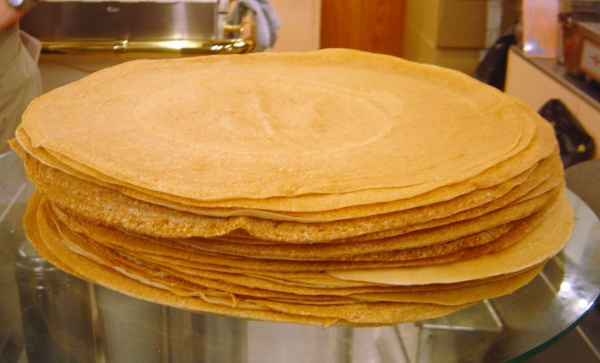Facts About Crêpe
A crêpe, also spelled "crepe" is a delectably thin pancake that comes in two primary varieties: sweet crêpes and savory galettes. Sweet crêpes are typically filled with delights such as Nutella, fruit preserves, or whipped cream, while savory ones might include fillings like cheese, ham, or mushrooms. The word "crêpe" originates from the Latin word "crispa" meaning "curled" or "wrinkled" and "galette" is derived from the French word for "pebble."
In France and Belgium, crêpes are a customary treat on Candlemas, celebrated on February 2nd. There is even an enjoyable tradition of flipping and catching the crêpe with a frying pan for good luck! Crêpes are cherished globally, especially in France, Belgium, the Netherlands, Canada, Lebanon, Brazil, and Argentina, often featuring in celebrations and special occasions.
Preparing crêpes involves a straightforward batter made from flour, milk, eggs, and sugar. For sweet crêpes, fillings are placed in the center before the crêpe is folded and served. Worldwide, people enjoy crêpes with a wide array of fillings and distinctive preparation methods. Special varieties include Mille crêpes, crêpe Suzette, English pancakes, and Swedish pancakes.
Crêpes hold cultural significance in many European countries and beyond, known by different names like "pannekake" in Norwegian, "palacsinta" in Hungarian, and "dosa" in South India. In countries such as Japan, Malaysia, Mexico, and the Philippines, crêpes have been integrated into local cuisines, each adding its own twist to the fillings and flavors.
You can often find crêpes in crêperies, where they might be served as a main course or a dessert. These establishments typically offer a variety of crêpes along with other baked goods and beverages. In addition to traditional options, there are modern variations like hamburger and pizza crêpes. Crêpes are versatile and enjoyed in countless ways across different cultures and culinary traditions.

 France
France